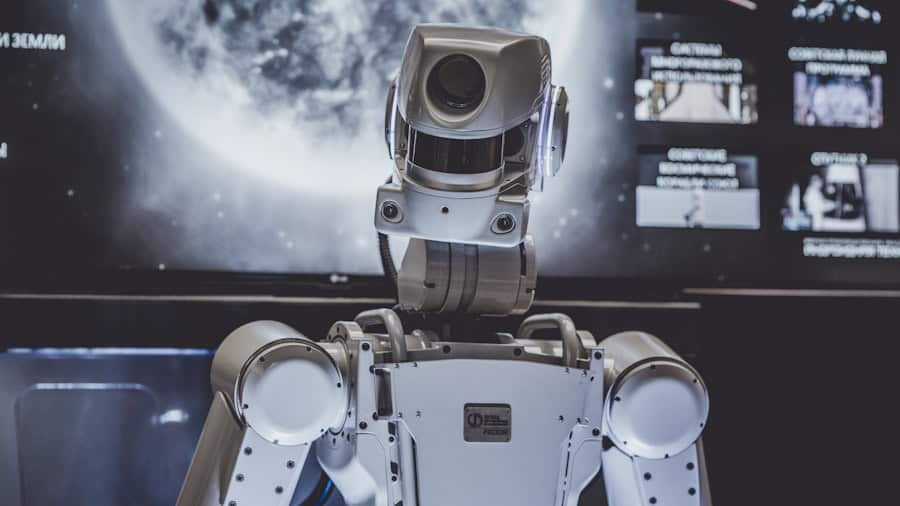Modular robotics represents a transformative approach to automation, characterized by the use of self-contained, interchangeable units that can be reconfigured to perform a variety of tasks. This innovative technology allows for the creation of robotic systems that can adapt to different functions and environments, making them particularly suitable for factory settings where flexibility and efficiency are paramount. The modular design enables robots to be assembled in various configurations, allowing manufacturers to tailor their robotic systems to meet specific operational needs without the necessity for extensive re-engineering.
The concept of modular robotics is not entirely new; however, advancements in materials science, artificial intelligence, and control systems have significantly enhanced their capabilities. These robots can be programmed to work collaboratively or independently, depending on the requirements of the production line. As industries increasingly seek to optimize their operations and reduce costs, modular robotics has emerged as a viable solution that addresses these challenges while providing a pathway for innovation in manufacturing processes.
Key Takeaways
- Modular robotics refers to the use of individual robotic modules that can be combined and reconfigured to perform various tasks in factory automation.
- Advantages of modular robotics in factory automation include increased flexibility, scalability, customization, and cost-effectiveness.
- Modular robotics offer flexibility and scalability in factory automation by allowing for easy reconfiguration and expansion of robotic systems to adapt to changing production needs.
- Customization and adaptability of modular robotics in factory settings enable the robots to be tailored to specific tasks and easily integrated into existing production processes.
- The cost-effectiveness and efficiency of modular robotics in factory automation are achieved through reduced downtime, increased productivity, and lower maintenance costs.
Advantages of Modular Robotics in Factory Automation
One of the primary advantages of modular robotics in factory automation is their inherent flexibility. Traditional robotic systems are often designed for specific tasks, which can lead to inefficiencies when production needs change. In contrast, modular robots can be easily reconfigured or repurposed to accommodate new tasks or workflows.
This adaptability is particularly beneficial in industries where product lines frequently change or where customization is a key component of the manufacturing process. For instance, an automotive assembly line may need to switch from producing one model to another, and modular robots can be quickly adjusted to handle different components without significant downtime. Moreover, modular robotics can enhance productivity by enabling parallel processing.
Multiple modules can work simultaneously on different tasks or components, significantly speeding up production times. This capability is especially advantageous in high-volume manufacturing environments where time-to-market is critical. By deploying a fleet of modular robots that can operate concurrently, factories can achieve higher throughput and maintain competitive advantage in an increasingly fast-paced market.
Flexibility and Scalability in Factory Automation with Modular Robotics
The scalability of modular robotics is another compelling feature that sets it apart from traditional automation solutions. As production demands fluctuate, manufacturers can easily scale their robotic systems up or down by adding or removing modules as needed. This scalability is particularly important in industries experiencing rapid growth or seasonal fluctuations in demand.
For example, a consumer electronics manufacturer may need to ramp up production during the holiday season and then scale back afterward. Modular robotics allows for this dynamic adjustment without the need for significant capital investment in new equipment. Additionally, the flexibility of modular robotics extends beyond mere scalability; it also encompasses the ability to integrate with various technologies and processes within the factory environment.
Modular robots can be designed to work alongside existing machinery and systems, facilitating a seamless transition into automated workflows. This interoperability is crucial for manufacturers looking to modernize their operations without overhauling their entire infrastructure. By leveraging modular robotics, factories can enhance their capabilities while minimizing disruption and maintaining continuity in production.
Customization and Adaptability of Modular Robotics in Factory Settings
Customization is a hallmark of modular robotics, allowing manufacturers to tailor robotic solutions to their specific operational requirements. Each module can be equipped with different tools or sensors, enabling it to perform a wide range of tasks—from assembly and packaging to quality control and inspection. This level of customization ensures that manufacturers can optimize their processes for maximum efficiency and effectiveness.
For instance, a food processing plant might utilize modular robots equipped with specialized grippers for handling delicate products, while an electronics manufacturer could deploy modules with precision soldering tools. The adaptability of modular robotics also extends to their ability to learn and evolve over time. With advancements in machine learning and artificial intelligence, these robots can analyze performance data and adjust their operations accordingly.
This self-optimizing capability means that as production processes change or improve, the robots can adapt without requiring extensive reprogramming or manual intervention. Such adaptability not only enhances operational efficiency but also contributes to continuous improvement initiatives within the factory setting.
Cost-Effectiveness and Efficiency of Modular Robotics in Factory Automation
Cost-effectiveness is a critical consideration for any manufacturing operation, and modular robotics offer significant advantages in this regard.
By automating repetitive tasks, manufacturers can allocate human resources to more complex activities that require critical thinking and problem-solving skills.
This shift not only enhances overall productivity but also improves employee satisfaction by allowing workers to engage in more meaningful work. Furthermore, the efficiency gains associated with modular robotics can lead to substantial reductions in operational costs over time. For example, modular robots can operate continuously without the need for breaks or downtime associated with human labor.
This capability allows factories to maximize output while minimizing energy consumption and waste. Additionally, the ability to quickly reconfigure robots for different tasks means that manufacturers can respond more rapidly to market demands without incurring significant costs associated with retooling or retraining staff.
Integration of Modular Robotics with Existing Factory Systems
Seamless Production Processes
Modular robots can be programmed to work alongside conveyor systems, ensuring that products are moved seamlessly through various stages of production. This integration enables a smooth and efficient production process, reducing the risk of errors and downtime.
Flexible and Phased Implementation
The integration process is often less disruptive than traditional automation solutions. Since modular robots can be added incrementally, manufacturers have the flexibility to implement automation gradually rather than undergoing a complete overhaul of their existing systems. This phased approach allows for better risk management and minimizes potential disruptions to ongoing operations.
Enhanced Value Proposition
As factories increasingly adopt Industry 4.0 principles, the ability of modular robotics to integrate with IoT devices and data analytics platforms further enhances their value proposition. This integration enables real-time monitoring and optimization of production processes, allowing manufacturers to make data-driven decisions and improve their overall efficiency.
Case Studies of Successful Implementation of Modular Robotics in Factories
Several case studies illustrate the successful implementation of modular robotics in various manufacturing environments. One notable example is a leading automotive manufacturer that adopted modular robotic systems on its assembly line. By utilizing interchangeable modules equipped with different tools for tasks such as welding, painting, and assembly, the company was able to reduce production time by 30%.
The flexibility of the modular system allowed them to quickly switch between different vehicle models without significant downtime or reconfiguration costs. Another compelling case study involves a consumer goods manufacturer that integrated modular robotics into its packaging operations. The company faced challenges related to fluctuating demand and the need for rapid product changes.
By deploying modular robots capable of handling various packaging formats, they achieved a 25% increase in throughput while reducing labor costs by 15%. The adaptability of the modular system allowed them to respond swiftly to market trends and consumer preferences, ultimately enhancing their competitive position in the industry.
Future Trends and Developments in Modular Robotics for Factory Automation
As technology continues to evolve, several trends are emerging that will shape the future of modular robotics in factory automation. One significant trend is the increasing incorporation of artificial intelligence and machine learning algorithms into modular robotic systems. These advancements will enable robots to not only perform tasks but also learn from their experiences, optimizing their operations over time based on real-time data analysis.
Another trend is the growing emphasis on sustainability within manufacturing processes.
As manufacturers seek to align with environmental regulations and consumer expectations regarding sustainability, modular robotics will play a crucial role in facilitating these efforts.
Additionally, advancements in materials science may lead to the development of lighter and more durable modules that enhance performance while reducing energy consumption. Innovations such as soft robotics could also expand the range of applications for modular systems, allowing them to handle delicate items or operate safely alongside human workers. In conclusion, the future of modular robotics in factory automation looks promising as industries continue to embrace flexibility, efficiency, and customization in their operations.
The ongoing evolution of this technology will undoubtedly lead to new applications and opportunities for manufacturers seeking to enhance their competitive edge in an ever-changing market landscape.
A related article to How Modular Robotics Enable Flexible Automation in Factories is Top Trends on LinkedIn 2023. This article explores the latest trends shaping the professional networking platform and how they are influencing industries like manufacturing and automation. It provides insights into how businesses can leverage these trends to stay ahead of the curve and drive innovation in their operations.
FAQs
What are modular robotics?
Modular robotics are a type of robotics system that consists of individual modules that can be combined and reconfigured to create different robotic configurations and functionalities.
How do modular robotics enable flexible automation in factories?
Modular robotics enable flexible automation in factories by allowing for easy reconfiguration and adaptation to different tasks and production requirements. This flexibility allows for efficient use of space and resources, as well as the ability to quickly respond to changes in production needs.
What are the benefits of using modular robotics in factories?
Some benefits of using modular robotics in factories include increased flexibility, scalability, and adaptability to changing production needs. They also allow for easier maintenance and upgrades, as well as the ability to integrate with other automation systems.
What types of tasks can modular robotics perform in factories?
Modular robotics can perform a wide range of tasks in factories, including assembly, pick and place, packaging, material handling, and quality control. Their flexibility allows them to be easily reconfigured to perform different tasks as needed.
How do modular robotics contribute to increased efficiency in factory automation?
Modular robotics contribute to increased efficiency in factory automation by allowing for faster reconfiguration, reduced downtime for maintenance and upgrades, and the ability to optimize production processes based on real-time data and changing requirements.



